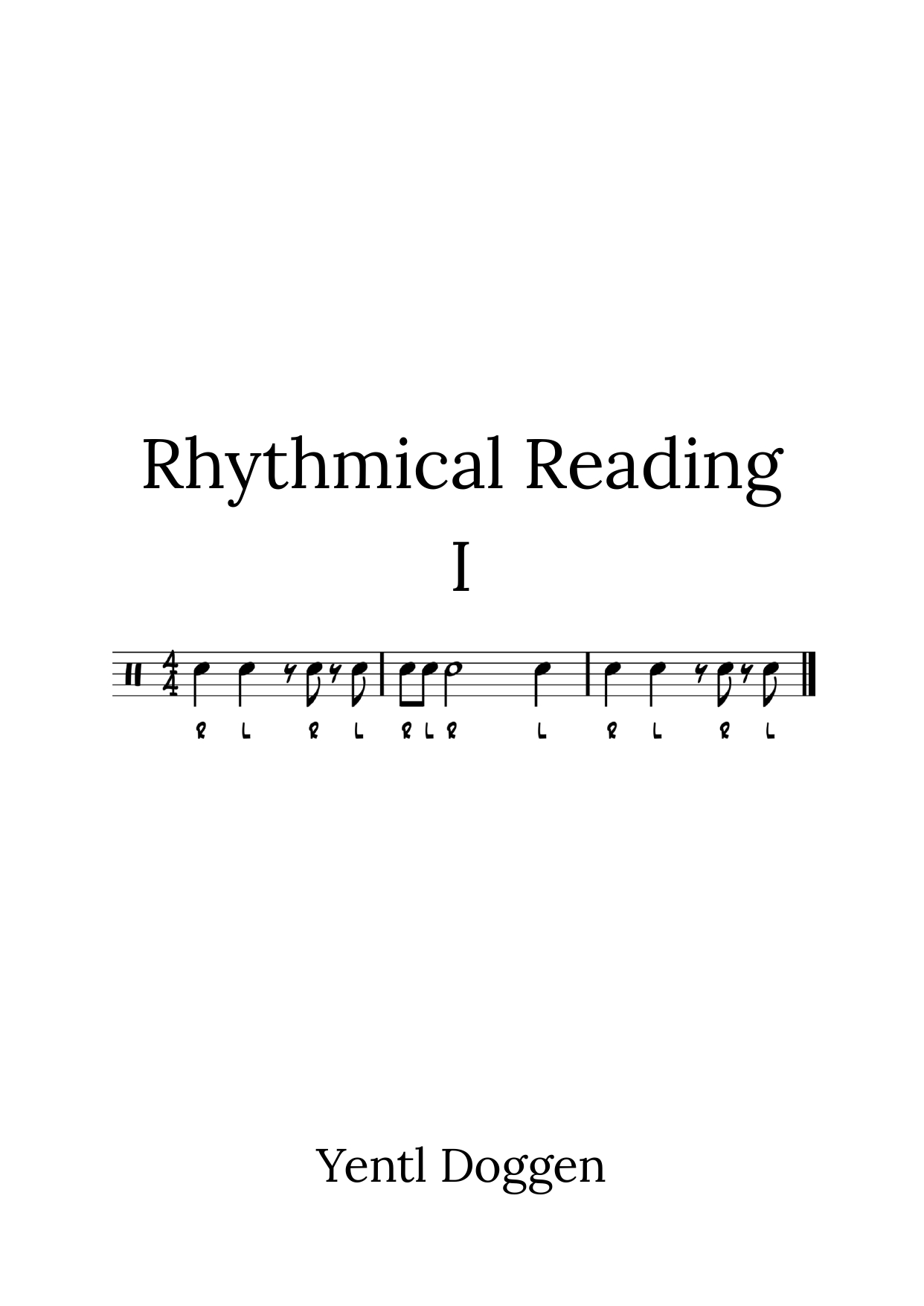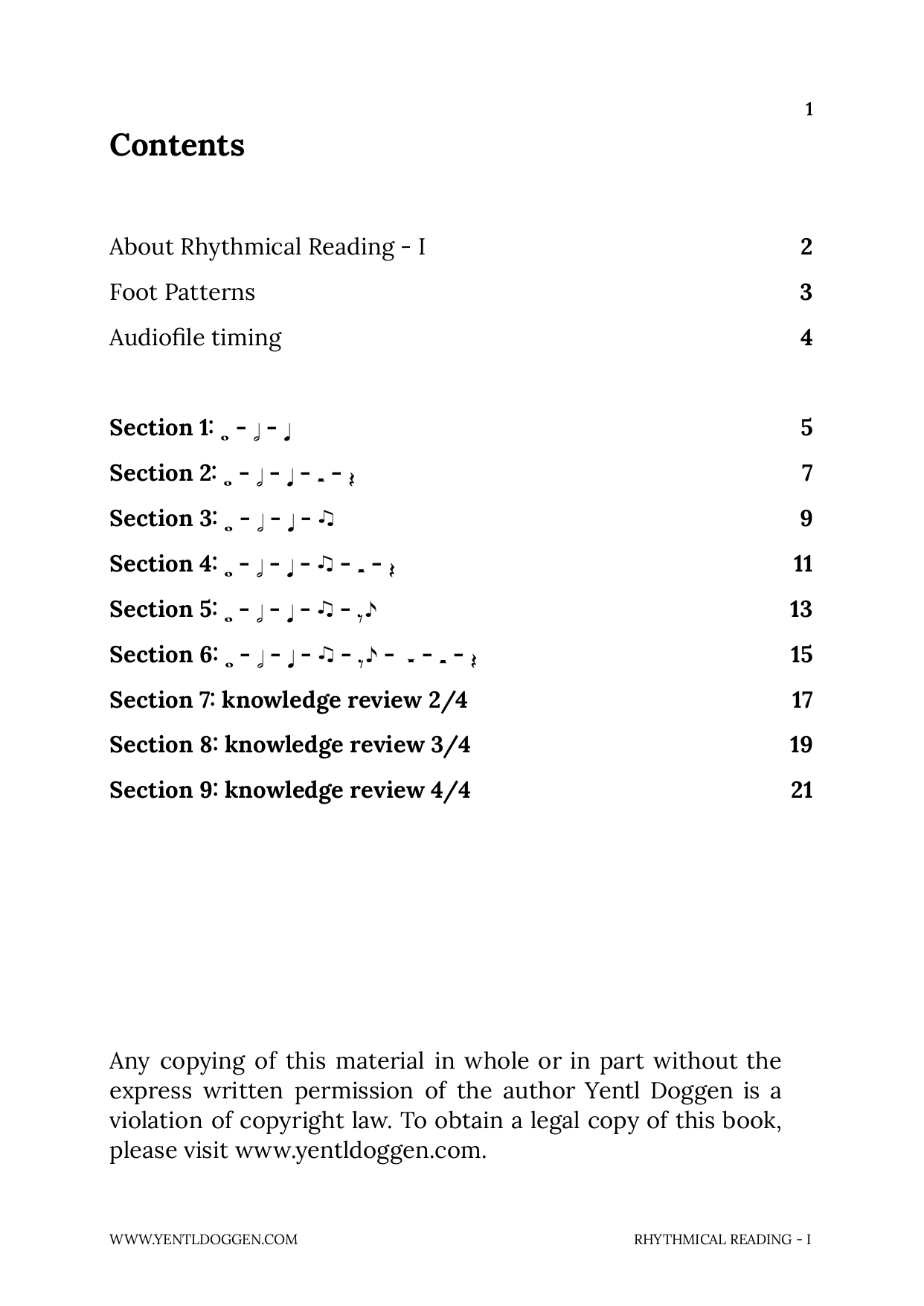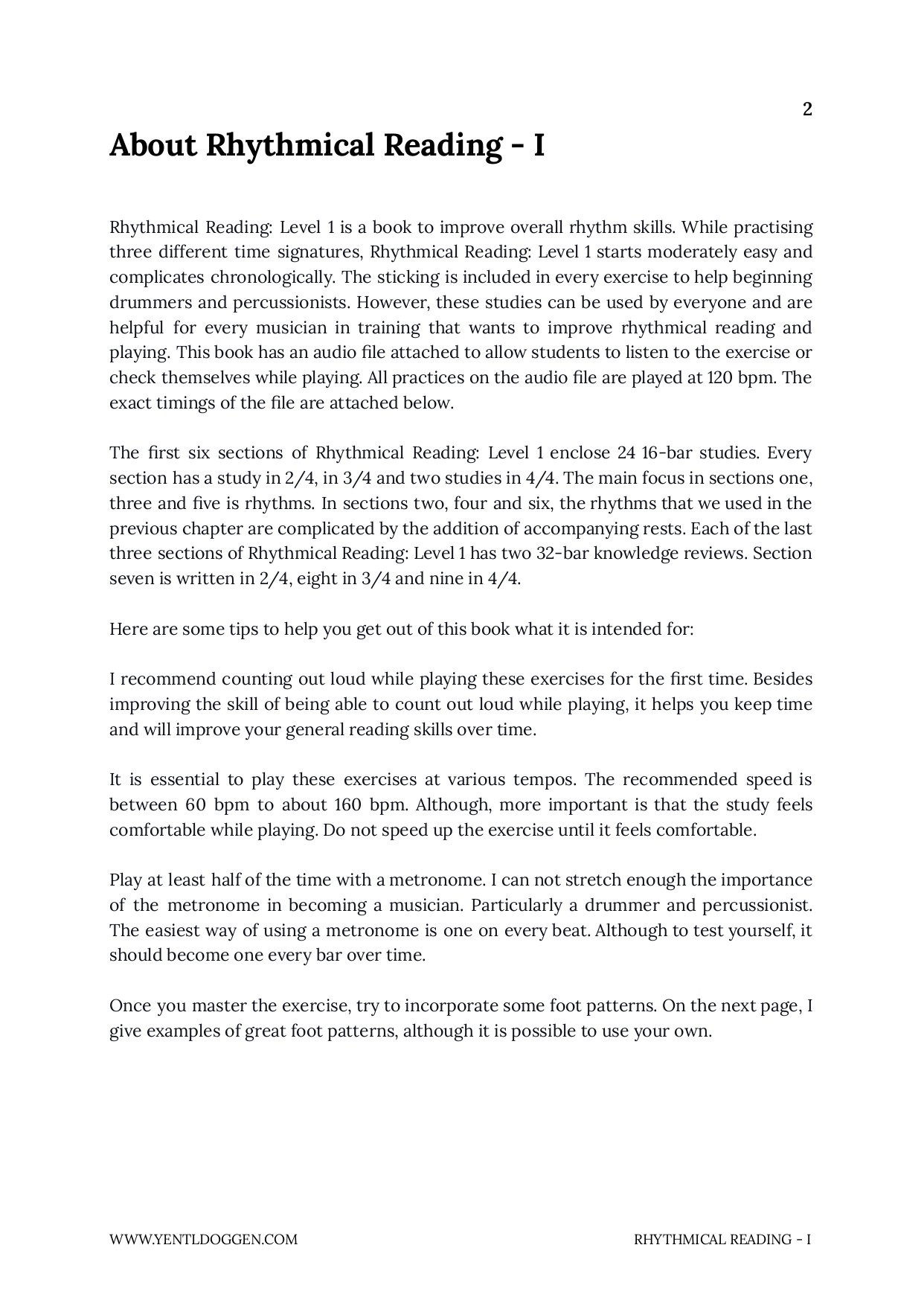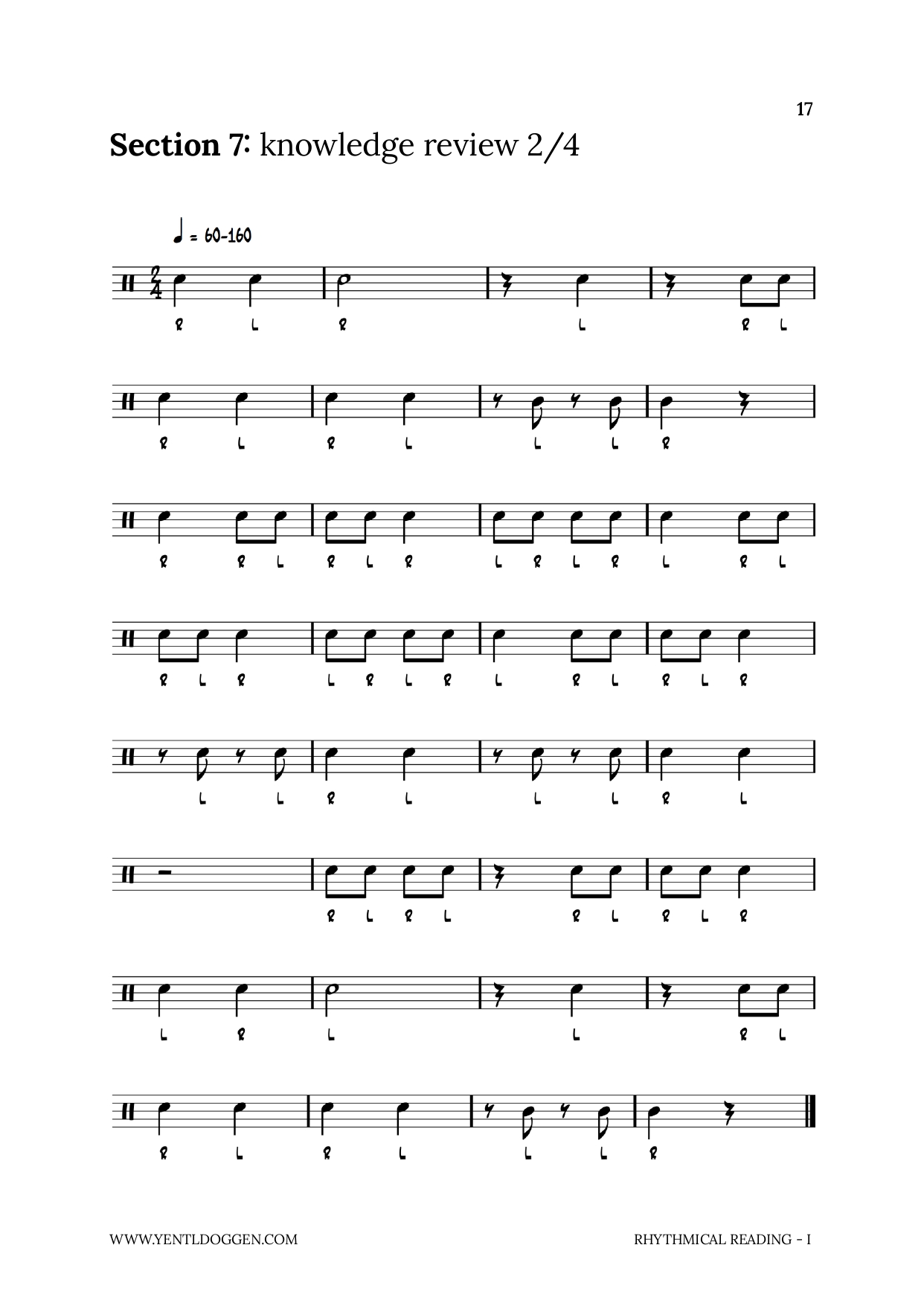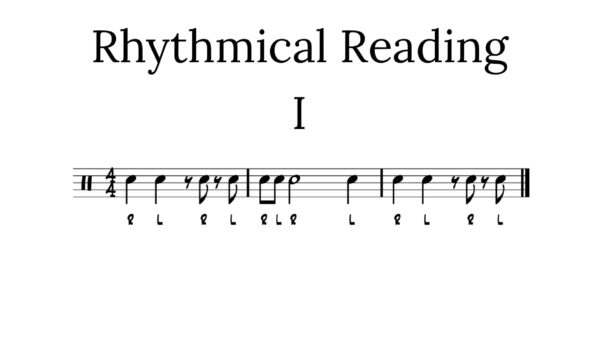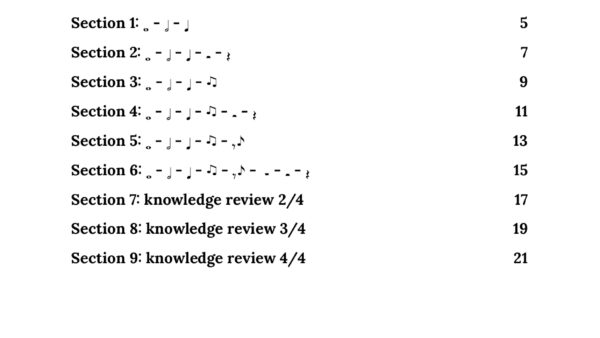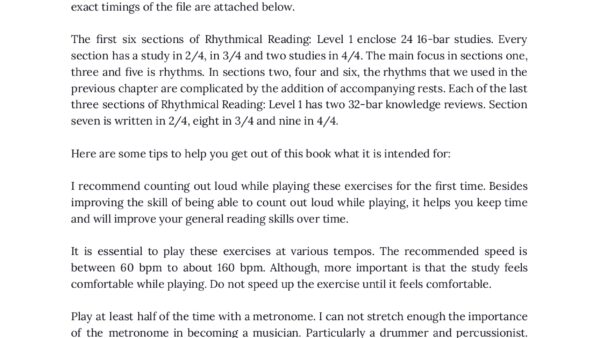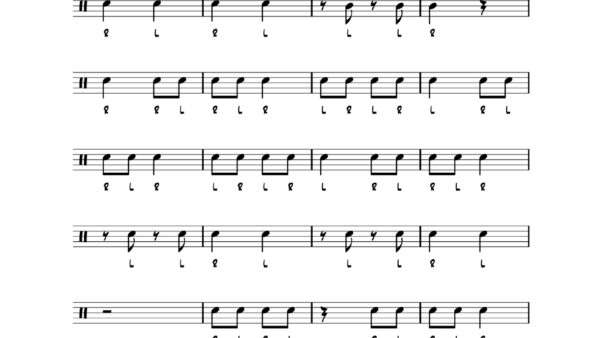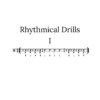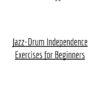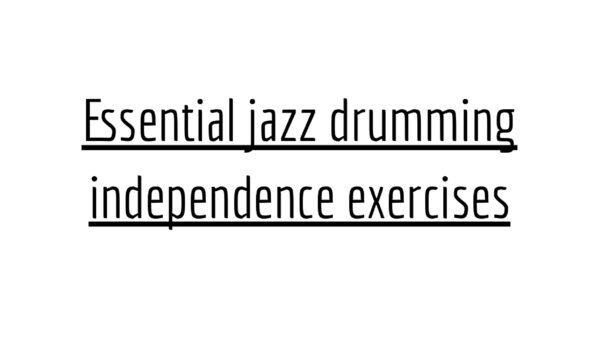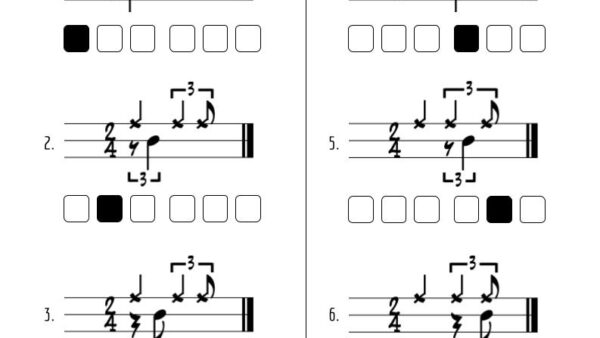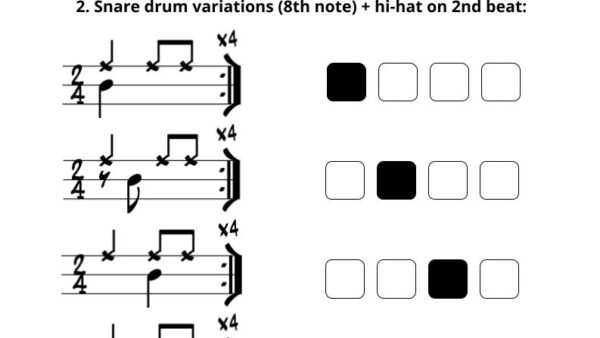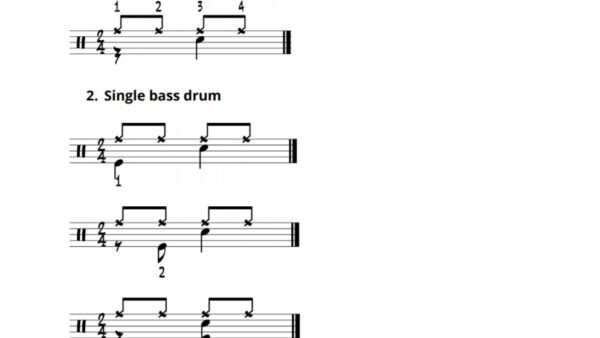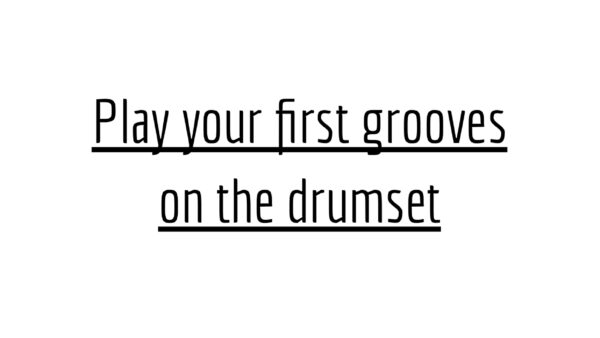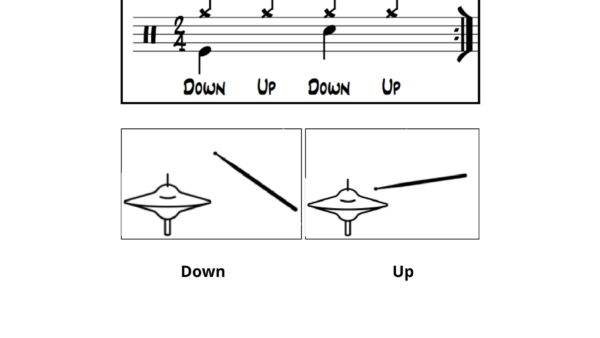Rhythmical Reading: level 1 – eBook | PDF download
€10,00
-> High-definition digital download (PDF).
-> High-quality audio file with all Rhythmical Reading Exercises.
-> Midi-file to use in personal DAW.
Upon ordering, you get two (2) downloads valid for 365 days.
Rhythmical Reading: Level 1
Rhythmical Reading: Level 1 is a book to improve overall rhythm skills. While practising three different time signatures, Rhythmical Reading: Level 1 starts moderately easy and complicates chronologically. The sticking is included in every exercise to help beginning drummers and percussionists. However, these studies can be used by everyone and are helpful for every musician in training that wants to improve rhythmical reading and playing. This book has an audio file attached to allow students to listen to the exercise or check themselves while playing. All practices on the audio file are played at 120 bpm. The exact timings of the file are attached below.
The first six sections of Rhythmical Reading: Level 1 enclose 24 16-bar studies. Every section has a study in 2/4, in 3/4 and two studies in 4/4. The main focus in sections one, three and five is rhythms. In sections two, four and six, the rhythms that we used in the previous chapter are complicated by the addition of accompanying rests. Each of the last three sections of Rhythmical Reading: Level 1 has two 32-bar knowledge reviews. Section seven is written in 2/4, eight in 3/4 and nine in 4/4.
How to use this book?
Here are some tips to help you get out of this book what it is intended for:
I recommend counting out loud while playing these exercises for the first time. Besides improving the skill of being able to count out loud while playing, it helps you keep time and will improve your general reading skills over time.
It is essential to play these exercises at various tempos. The recommended speed is between 60 bpm to about 160 bpm. Although, more important is that the study feels comfortable while playing. Do not speed up the exercise until it feels comfortable.
Play at least half of the time with a metronome. I can not stretch enough the importance of the metronome in becoming a musician. Particularly a drummer and percussionist. The easiest way of using a metronome is one on every beat. Although to test yourself, it should become one every bar over time.
Once you master the exercise, try to incorporate some foot patterns. On the next page, I give examples of great foot patterns, although it is possible to use your own.


